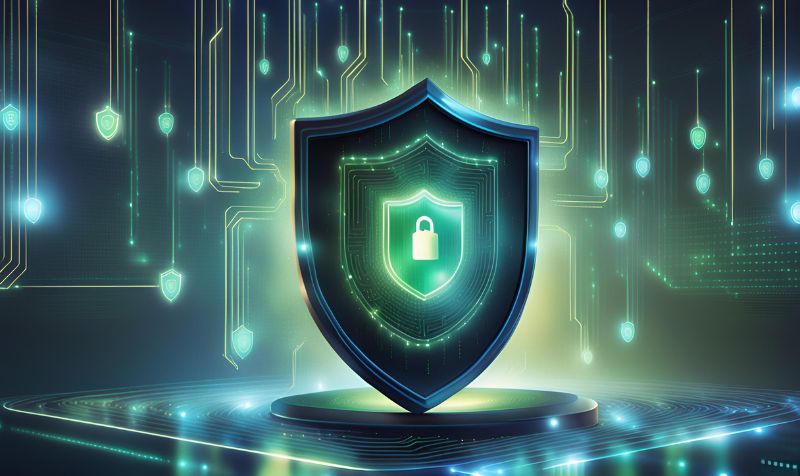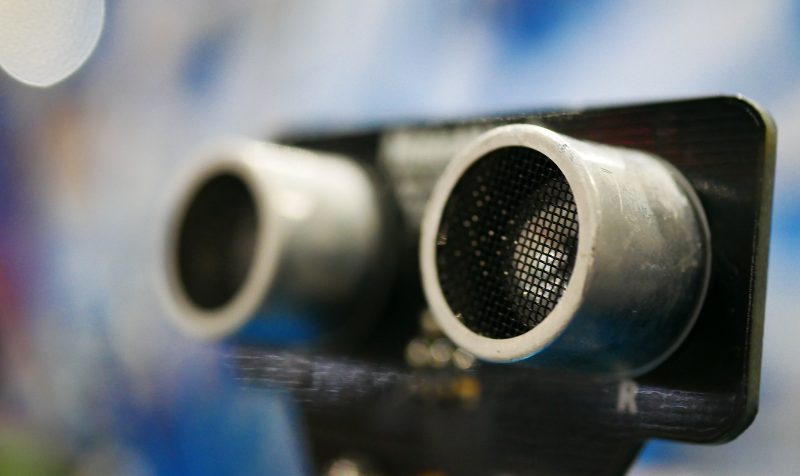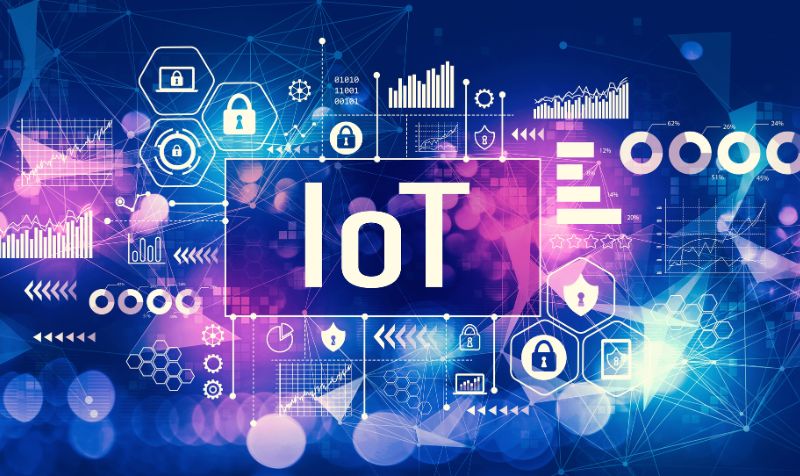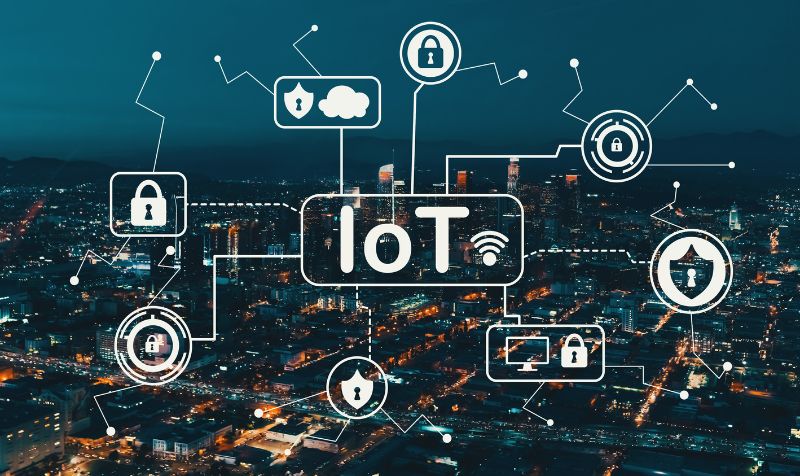

Introduction
Have you ever imagined your refrigerator automatically reordering milk when you’re running low? Or perhaps a fitness tracker monitoring your heart rate during a workout and sending data to your phone? These are just a few examples of the incredible potential of the Internet of Things (IoT). But what makes these seemingly magical applications possible? The answer lies in a tiny but powerful component: sensors.
In 2024, there are already 17.08 billion connected IoT devices globally, and this number is expected to double to 29.42 billion by 2030. So imagine the possibilities that exist in the future, as the data from these devices is now available to use and control from other electronic devices.
Sensors are what make this magic possible, constantly gathering real-time data about their surroundings. This data, from temperature and pressure to motion and sound, is then used to automate tasks, improve efficiency, and even save lives.
Let’s delve deeper to understand what exactly IoT sensors are, what they do, and how they impact our lives in more ways than one.
Table of Contents
- What are sensors in IoT?
- How do sensors work?
- Characteristics of a sensor
- Classification of sensors
- Role of sensors in the architecture of IoT
- Conclusion
What are sensors in IoT?
The Internet of Things (IoT) is a technology innovation that allows all our devices to be connected and communicate with each other. For example, if your television, fridge, and air conditioner are using Wi-Fi, you can control these devices using your smartphone or voice assistant. From changing the temperature to adjusting the volume of your television or any other activity, IoT creates new possibilities for all our electronic devices.
Sensors are electronic devices that continuously gather real-time information about their surroundings. This information can be anything from temperature and pressure to motion and light. Then, sensors convert this physical data into an electrical signal that devices can understand.
How do sensors work?
Imagine a sensor as a tiny translator constantly monitoring a specific aspect of its environment. Here’s a simplified breakdown of the process:
- Physical Measurement: The sensor detects a physical quantity like temperature, pressure, light, or motion.
- Signal Conversion: This physical phenomenon is then converted into an electrical signal the device can understand.
- Data Processing: The processed electrical signal becomes valuable data, often transmitted wirelessly.
- Action or Analysis: This data is then used to trigger actions (like adjusting a thermostat) or analyzed for insights (like tracking fitness data).
Thus, sensors unlock new possibilities for all our devices, including its use for business or personal use. Some of the ways sensors are being used in key industries include:
- Healthcare: Wearable sensors in smartwatches and fitness trackers monitor heart rate, blood pressure, and activity levels, providing valuable data for health monitoring and disease prevention.
- Automotive: Cars equipped with temperature sensors can detect engine overheating and alert drivers, preventing potential breakdowns. Additionally, pressure sensors in tires ensure optimal performance and fuel efficiency.
- Home Automation: Smart thermostats utilize temperature sensors to adjust room temperature based on your preferences automatically, saving energy and enhancing comfort.
These are just a few examples, but the possibilities are truly endless! Sensors are continuously being integrated into new devices, paving the way for a more connected and intelligent world.
Characteristics of a sensor
Do you wonder what qualities make sensors effective tools for gathering data? Here are some key characteristics that define a good sensor:
- Sensitivity: This refers to the sensor’s ability to detect even the slightest changes in the measured quantity. A highly sensitive sensor can pick up on subtle variations, leading to more accurate data.
- Resolution: This describes the smallest detectable change in the measured quantity. Imagine a ruler; a higher resolution sensor would be like having markings for millimeters instead of centimeters, allowing for more precise measurements.
- Accuracy: This reflects how closely the sensor’s output reflects the actual physical quantity being measured. A sensor with high accuracy provides data that closely represents the real world.
- Linearity: Ideally, the output of a sensor should have a linear relationship with the measured quantity. This means a consistent change in output for a consistent change in the physical property.
- Range: This defines the minimum and maximum values the sensor can effectively measure. Choosing a sensor with an appropriate range ensures it can capture the data relevant to your application.
- Selectivity: A good sensor should be selective to the specific quantity it’s designed to measure. Minimal interference from other environmental factors leads to cleaner and more reliable data.
- Response Time: This refers to the time it takes for a sensor to respond to a change in the measured quantity. Sensors with faster response times are crucial for applications requiring real-time data processing.
Classification of sensors
The world of sensors is vast and diverse, catering to a multitude of applications. To bring some order to this variety, sensors can be broadly classified based on two main aspects:
1. By Operating Principle:
This classification focuses on the physical phenomenon the sensor uses to detect and convert the measured quantity into an electrical signal. Here are some common types:
- Piezoelectric Sensors: These sensors convert pressure or mechanical stress into an electrical voltage. They are widely used in pressure sensors, microphones, and accelerometers (used in airbags and motion tracking).
- Thermocouple Sensors: These sensors rely on the principle that the junction of two dissimilar metals generates a voltage proportional to the temperature difference between the junction and a reference point. They are commonly used for industrial temperature measurement.
- Photoelectric Sensors: These sensors detect light or changes in light intensity. They are used in applications like automatic doors, security systems, and object detection.
- Electrochemical Sensors: These sensors utilize chemical reactions to generate an electrical signal. They are used in gas sensors, smoke detectors, and pH meters.
2. By Application:
This classification categorizes sensors based on the specific function they perform in an IoT application. Some examples include:
- Temperature Sensors: They measure temperature and are ubiquitous in various devices, from thermostats to smartwatches.
- Pressure Sensors: They detect changes in pressure and are used in applications like tire pressure monitoring systems and industrial process control.
- Proximity Sensors: They discover the presence or absence of nearby objects without physical contact. You’ll find them in automatic faucets, self-driving cars, and even robotic vacuum cleaners.
- Motion Sensors: These detect movement or changes in position. They are used in security systems, activity trackers, and video game controllers.
Role of sensors in the architecture of IoT
Sensors play a crucial role in the overall architecture of an IoT system, acting as the foundation for data collection and analysis. Here’s a breakdown of their key functions:
- Data acquisition: Sensors are the primary source of data for any IoT system. They continuously gather real-time information about the surrounding environment, transforming physical quantities into electrical signals.
- Preprocessing: In some cases, sensors perform basic preprocessing on the collected data. This might involve filtering out noise or converting the data into a format suitable for further processing or transmission.
- Communication: Modern sensors often have built-in communication capabilities, allowing them to transmit data wirelessly to other devices within the IoT network. This data can then be sent to gateways or cloud platforms for further processing and analysis.
- Enabling automation: Sensor data can be used to automate various tasks and processes within an IoT system. For instance, smart lights can be programmed to turn on when they detect you entering the house and off when you exit.
- Real-time Monitoring: Sensors enable real-time monitoring of various parameters in an IoT system. This allows for immediate responses to changes in the environment, leading to improved efficiency and control.
- Data-driven Insights: The vast amount of data collected by sensors can be analyzed to gain valuable insights. This data can be used for predictive maintenance, optimizing processes, and even identifying potential problems before they occur.
Conclusion
The world of sensors in IoT is a fascinating and ever-evolving landscape. These tiny marvels play a critical role in transforming our physical world into a network of interconnected devices, collecting real-time data that fuels innovation and progress.

By understanding the various types, features, and functionalities of sensors, you gain valuable insights into the core principles of IoT. This knowledge empowers you to explore the exciting possibilities of this technology, whether you’re a student seeking to delve deeper into the technical aspects, an industry professional looking to leverage IoT for business efficiency, or an academician researching the future of connected devices.
Ready to take the next step?
Explore the sensor networks for the Internet of Things course offered by IEEE on our portal: link to IEEE sensor course. This comprehensive program will equip you with the knowledge and skills to navigate the world of sensors and unlock the full potential of the Internet of Things.
FAQ
1. What do you mean by sensors?
Sensors are specialized devices that constantly gather information about their surroundings by detecting physical quantities like temperature, pressure, light, or motion. This information is then converted into an electrical signal that devices can understand. For IoT, they act as the eyes and ears of connected devices, providing essential data about that device.
2. Why are IoT sensors used?
In IoT, sensors are the devices’ ears and eyes, collecting data from various sources and sending it to cloud-based platforms for analysis. They play a crucial role in various ways:
- Data Acquisition: They continuously collect real-time data about the environment, providing valuable insights for analysis and decision-making.
- Enabling Automation: Sensor data can be used to automate tasks and processes, leading to increased efficiency and convenience.
- Real-Time Monitoring: Sensors allow us to monitor various parameters in real-time, enabling immediate responses to changes in the environment.
- Data-Driven Insights: The vast amount of data collected by sensors can be analyzed to gain valuable insights, paving the way for improvements and innovation.
3. What are the types of sensors?
The world of sensors is vast and diverse, but here are some common types you might encounter in IoT
- Temperature Sensors: measure temperature and are used in everything from thermostats to smartwatches.
- Pressure sensors: It detect changes in pressure and find applications in areas like tire pressure monitoring and industrial process control.
- Proximity Sensors: can detect the presence or absence of nearby objects without physical contact. They are used in automatic faucets, self-driving cars, and even robotic vacuum cleaners.
- Motion Sensors: detect movement or changes in position. They are used in security systems, activity trackers, and video game controllers.
4. What is the principle of a sensor?
The principle of any sensor is to detect changes in the environment and respond accordingly by generating an electrical signal. These can be physical measurements (temperature or pressure), data-driven action, or trigger-driven reaction (regulating thermostat, tracking fitness activity).
Post Tags : IoT IoT sensors
Share:
Social Media
Most Popular



What is Blockchain? A Definitive Guide

IoT Courses: From Free to Paid All Included
Subscribe To Our Weekly Newsletter
Categories
Filter by tags
-
what is cloud computing
-
Visualization in cloud computing
-
smart contracts
-
sensors
-
Regression in machine learning
-
Python programming
-
Python developer salary
-
Python
-
protocols
-
ML
-
Machine learning MCQ
-
Machine Learning
-
IoT with examples
-
IoT sensors
-
IoT device management
-
IoT
-
Internet of things
-
How to learn python
-
Healthcare
-
Hands-on machine learning
-
Examples of machine learning
-
Ethereum
-
Decentralized
-
cybersecurity
-
cryptocurrency
-
Cloud Computing
-
Cloud
-
Blockchain developer salary
-
Blockchain
-
Bitcoins
-
Bias in machine learning
-
Artificial Intelligence
-
Actuators in IoT
-
actuators
-
5g
Related Posts

Introduction to Cybersecurity
The cyberattack juggernaut increased impossibly in 2024 and left its victims more devastated than ever. Last year, companies were the victims of some nasty attacks.

What is IoT and How to Learn IoT: A Definitive Guide (2024)
Introduction The first question that comes to mind is, “What is the full form of IoT?” IoT stands for the Internet of Things, which refers

What is Blockchain? A Definitive Guide
Blockchain is quickly becoming a buzzword in various industries. This technology was popularised with the advent of Bitcoin in 2008. However, blockchain applications have gone

IoT Courses: From Free to Paid All Included
Introduction In this comprehensive guide on IoT courses, we will explore the field of the Internet of Things and its valuable skills for career advancement,
